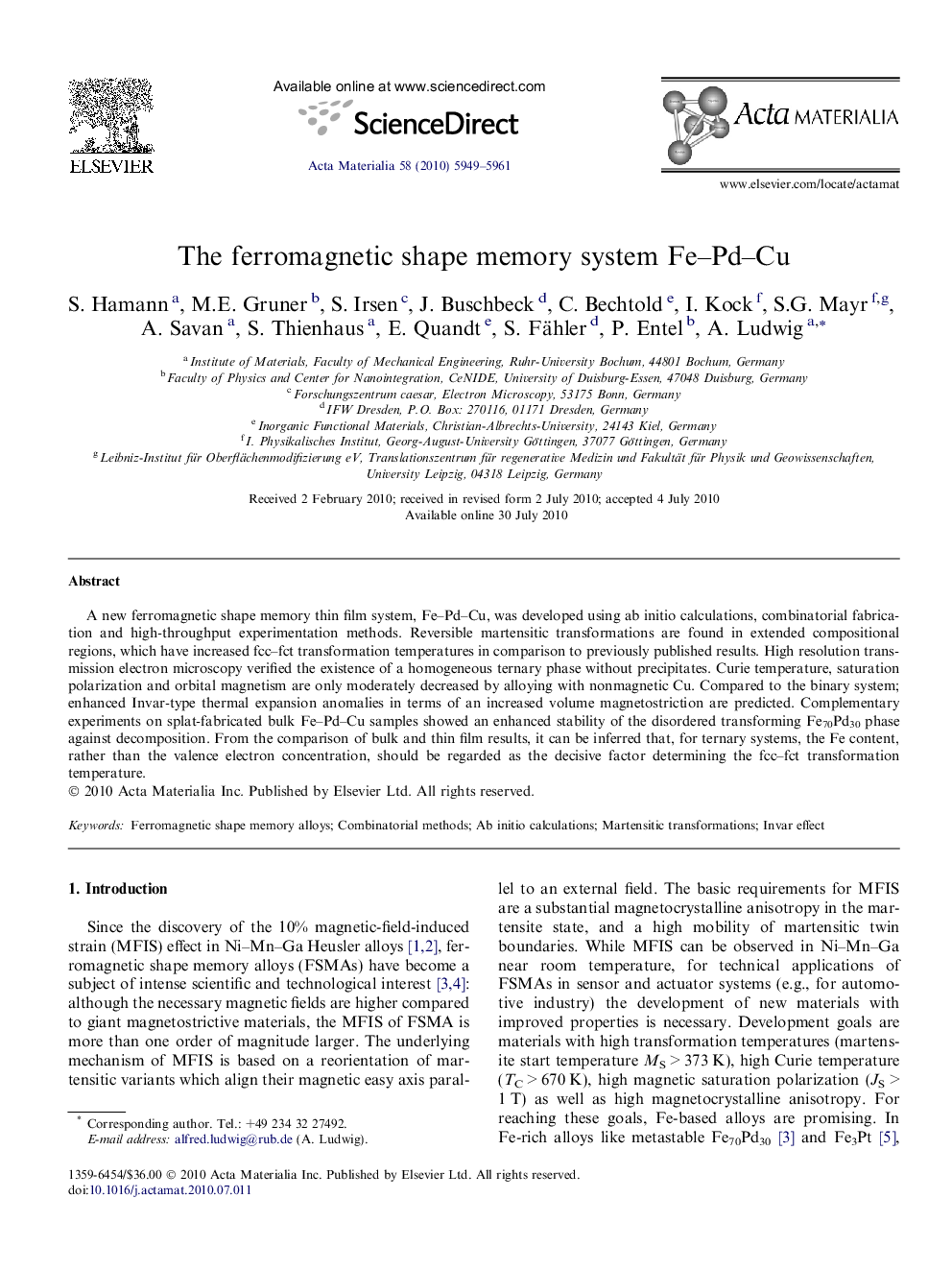| Article ID | Journal | Published Year | Pages | File Type |
|---|---|---|---|---|
| 1447570 | Acta Materialia | 2010 | 13 Pages |
A new ferromagnetic shape memory thin film system, Fe–Pd–Cu, was developed using ab initio calculations, combinatorial fabrication and high-throughput experimentation methods. Reversible martensitic transformations are found in extended compositional regions, which have increased fcc–fct transformation temperatures in comparison to previously published results. High resolution transmission electron microscopy verified the existence of a homogeneous ternary phase without precipitates. Curie temperature, saturation polarization and orbital magnetism are only moderately decreased by alloying with nonmagnetic Cu. Compared to the binary system; enhanced Invar-type thermal expansion anomalies in terms of an increased volume magnetostriction are predicted. Complementary experiments on splat-fabricated bulk Fe–Pd–Cu samples showed an enhanced stability of the disordered transforming Fe70Pd30 phase against decomposition. From the comparison of bulk and thin film results, it can be inferred that, for ternary systems, the Fe content, rather than the valence electron concentration, should be regarded as the decisive factor determining the fcc–fct transformation temperature.
